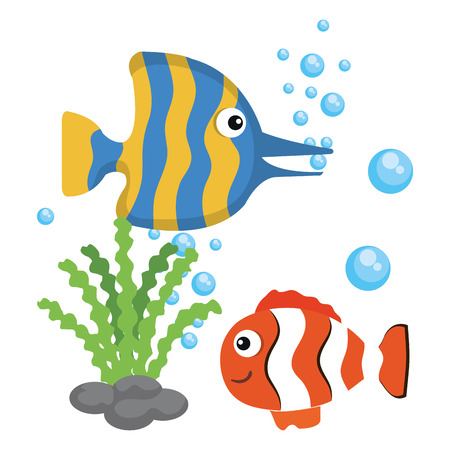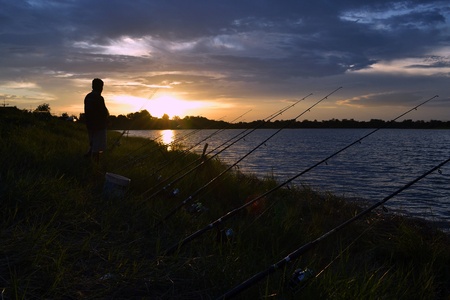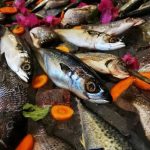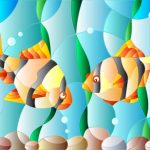1. Introduction to Hidden Freshwater Paradises
If youre an angler who craves peaceful surroundings, crystal-clear water, and a break from crowded piers and busy lakes, youre not alone. More and more fishing enthusiasts across the U.S. are turning their attention toward hidden freshwater gems—remote fishing spots that remain largely untouched by mainstream tourism or heavy recreational use.
These secret fishing havens offer more than just a chance to catch bass, trout, catfish, or panfish—they provide an escape into natures quiet corners where the only sounds you’ll hear are birds overhead and your line hitting the water. Whether tucked away in national forests, nestled behind winding backroads, or located within under-the-radar state parks, these spots are perfect for anglers who value solitude and natural beauty as much as the catch itself.
Why Hidden Spots Are Gaining Popularity
There’s a growing trend among seasoned anglers and weekend fishers alike: finding places off the beaten path. Here’s why these hidden locations are gaining traction:
| Reason | Description |
|---|---|
| Less Fishing Pressure | Fewer people means healthier fish populations and better chances of landing a big one. |
| Pristine Waters | Remote areas often have cleaner, clearer water due to minimal development and pollution. |
| Natural Beauty | These spots often feature stunning landscapes—from mountain backdrops to quiet forested lakes. |
| Peace and Quiet | No crowds, no noise—just you and the outdoors. |
What Makes a Spot “Hidden”?
A “hidden” fishing location doesn’t necessarily mean it’s completely unknown—it might just be less advertised or harder to access. These places may require a short hike, a drive down a gravel road, or even some local knowledge to find. But for those willing to put in the effort, the rewards can be unforgettable.
Types of Hidden Freshwater Locations You’ll Discover in This Series:
- Underrated state park lakes with excellent shore access
- Backcountry rivers known only to locals
- High-altitude alpine lakes with limited access but incredible views
- Small reservoirs surrounded by wilderness areas
The Journey Begins Here
This is just the beginning of our tour through 21 hidden freshwater fishing spots across the U.S. From the lush forests of Oregon to the quiet bayous of Louisiana, we’ll guide you through secret places where you can cast your line far from the crowds—and maybe even discover your new favorite fishing hole.
2. The Allure of Going Off the Beaten Path
When it comes to freshwater fishing, some of the best spots aren’t marked on a tourist map. Venturing into lesser-known locations offers a unique kind of reward that goes beyond just catching fish. These hidden gems often provide a more peaceful experience, healthier ecosystems, and even better chances of reeling in trophy-sized catches.
Fewer Crowds, More Peace
One of the biggest benefits of fishing in off-the-radar spots is the solitude. Unlike popular lakes and rivers where you might be elbow-to-elbow with other anglers, these hidden waters let you enjoy nature without the noise and competition. It’s just you, your gear, and the water — a perfect setting for relaxation or quality time with friends and family.
Healthier Ecosystems
Lesser-known fishing spots often mean less human impact. These areas are usually cleaner, with more balanced ecosystems. That means better water quality, thriving plant life, and healthier fish populations. Since these places aren’t overfished, the natural balance is preserved, giving you a better chance to see different species in their prime condition.
Better Odds for Trophy Fish
If youre chasing that once-in-a-lifetime catch, heading off the beaten path might just be your best bet. Because these spots arent heavily fished, the fish have more time to grow — and grow big. Some anglers have reported pulling out record-sized bass or trout from remote streams and hidden lakes that most people overlook.
Quick Comparison: Popular vs. Hidden Fishing Spots
| Feature | Popular Spots | Hidden Gems |
|---|---|---|
| Crowd Level | High | Low |
| Ecosystem Health | Often impacted | More natural & balanced |
| Trophy Fish Potential | Lower due to pressure | Higher due to low pressure |
| Atmosphere | Noisy & busy | Peaceful & serene |
Tip:
If youre planning to explore one of these secret spots, do your homework beforehand. Check local regulations, bring proper gear for remote areas, and always respect nature by leaving no trace behind.
The journey to untouched waters might take more effort, but the rewards are well worth it.

3. Regional Gems: Hidden Spots by Region
When it comes to freshwater fishing in the U.S., every region has its own secret spots that locals swear by. These hidden gems offer more than just a quiet escape—they provide unique angling experiences shaped by the local environment, fish species, and regional culture. Let’s break it down region by region so you can plan your next off-the-grid fishing adventure.
Northeast
The Northeast is known for its rich history and rugged natural beauty, and that extends to its lesser-known fishing holes. From secluded mountain lakes to quiet forested rivers, here are a few top picks:
| Location | State | What Makes It Special |
|---|---|---|
| Flagstaff Lake | Maine | Remote location, great for brook trout and landlocked salmon |
| Delaware River Headwaters | New York | Trophy brown trout with minimal crowds |
| Lake Willoughby | Vermont | Crystal-clear glacial lake with lake trout and perch |
South
The South offers warm waters and a long fishing season. While bass fishing gets most of the attention, these hidden freshwater spots deliver big rewards without the big crowds:
| Location | State | What Makes It Special |
|---|---|---|
| Caddo Lake Backwaters | Texas/Louisiana border | Cypress swamp atmosphere with largemouth bass and crappie action |
| Lithia Springs Reservoir | Georgia | A peaceful spot for catfish and bream, tucked away from busy lakes |
| Okefenokee Swamp Channels | Georgia/Florida border | A unique ecosystem for bowfin, warmouth, and pickerel fishing |
Midwest
The Midwest is home to countless lakes, rivers, and streams—many of which fly under the radar. Whether youre after walleye or smallmouth bass, these spots are worth checking out:
| Location | State | What Makes It Special |
|---|---|---|
| Kettle Moraine Lakes (Hidden Lakes) | Wisconsin | Glacial kettle lakes with clear water and diverse fish populations including panfish and pike |
| Pere Marquette River Tributaries | Michigan | A steelhead haven in spring and fall with beautiful forest surroundings |
| Loon Lake (Cass County) | Minnesota | A less-trafficked gem for northern pike and bluegill fishing |
Southwest
You might not think of the desert when you think of freshwater fishing, but the Southwest has some incredible tucked-away reservoirs and mountain lakes worth exploring:
| Location | State | What Makes It Special |
|---|---|---|
| Bluewater Lake State Park | New Mexico | A prime spot for tiger muskie in scenic high desert terrain |
| Lynx Lake Recreation Area | Arizona | A peaceful mountain lake stocked with rainbow trout near Prescott National Forest |
| Eagle Nest Lake State Park | New Mexico | A cold-water lake at 8,300 feet elevation, perfect for kokanee salmon and cutbow trout fishing |
Pacific Northwest (PNW)
The Pacific Northwest is a paradise for anglers who love wild rivers, alpine lakes, and iconic game fish like steelhead and salmon. Here are a few lesser-known hotspots:
| Location | State | What Makes It Special |
|---|---|---|
| Nest Lake (near Mount Hood) | Oregon | A quiet alpine destination for brook trout with amazing views of Mt. Hood. |
| Sullivan Lake Trails Offshoots (Selkirk Mountains) | Washington State | A rarely-visited area for bull trout and cutthroat in pristine waters. |
| Crescent Lake Backcountry Access Points | Oregon | Tucked-away shoreline pockets full of kokanee salmon waiting to be discovered. |
No matter where youre headed across the U.S., theres likely a hidden freshwater fishing spot nearby just waiting to be explored. Each region brings something special to the table—from cypress swamps in the South to glacier-fed rivers in the PNW—giving you plenty of reasons to pack your gear and hit the road.
4. Local Knowledge and What to Expect
Before you hit the road in search of those hidden freshwater fishing gems across the U.S., its important to get familiar with the local fishing scene. Each spot has its own rules, seasonal changes, and gear needs. Doing a little homework ahead of time can make your trip smoother—and more successful.
Know the Rules: Local Regulations Matter
Fishing regulations vary from state to state, and sometimes even by individual lake or river. These rules are there to protect fish populations and ensure everyone has a fair shot at landing a catch. Make sure to check if you need a specific fishing license or permit before heading out.
Quick Look: Fishing License Requirements by Region
| Region | License Required | Where to Get It |
|---|---|---|
| Northeast (e.g., Vermont, Maine) | Yes | State Fish & Wildlife Website or Local Tackle Shops |
| Southeast (e.g., Georgia, Alabama) | Yes | Online or State Parks Offices |
| Midwest (e.g., Minnesota, Wisconsin) | Yes | DNR Websites or Retailers like Walmart |
| West (e.g., Colorado, Oregon) | Yes | Fish & Game Departments or Mobile Apps |
Seasonal Patterns: Timing is Everything
The time of year you go can have a big impact on your success. Some lakes are best in early spring during spawning season, while others shine in late fall when fish are feeding up for winter. Keep an eye on local reports and talk to nearby anglers for up-to-date info.
Seasonal Highlights by Region
| Region | Best Time to Fish | Main Species Active |
|---|---|---|
| Northeast | April – June | Trout, Smallmouth Bass |
| Southeast | March – May, October – November | Largemouth Bass, Crappie |
| Midwest | May – July | Pike, Walleye, Bluegill |
| West | June – August | Rainbow Trout, Kokanee Salmon |
Packing Smart: Gear You’ll Want On Hand
You don’t need a full tackle shop in your backpack—but having the right gear makes a huge difference. Here’s a checklist to help you pack smarter for these remote destinations:
Essential Gear Checklist:
- Rods & Reels: Medium-action rod for all-around use; ultralight if targeting trout or panfish.
- Tackle: Jigs, spinners, soft plastics, crankbaits—choose based on target species.
- Bait: Live bait like worms or minnows is often effective in low-pressure waters.
- Tackle Box: Compact but well-organized with hooks, sinkers, bobbers, etc.
- Sunscreen & Bug Spray: Especially important in forested or backcountry areas.
- Map or GPS: Cell service may be limited in remote areas.
- Casting Net or Stringer: For managing your catch if keeping fish.
- PFD (Personal Flotation Device): Required by law in many states if fishing from a kayak or canoe.
The more prepared you are with local knowledge and the right gear, the better your experience will be. These hidden spots offer some of the most rewarding freshwater fishing in the country—you just have to know how to approach them.
5. Sustainable Fishing in Remote Locations
When youre exploring the untouched waters of hidden freshwater fishing spots across the U.S., its important to remember that your actions directly impact these pristine environments. Many of these remote locations have remained undisturbed for generations, and keeping them that way means adopting sustainable fishing practices that protect both the fish and their habitat.
Practice Catch-and-Release
One of the best ways to preserve fish populations in secluded areas is by practicing catch-and-release. This method allows anglers to enjoy the thrill of the catch while ensuring that fish can continue to thrive for years to come. Heres a quick guide on how to do it properly:
| Catch-and-Release Tip | Why It Matters |
|---|---|
| Use barbless hooks | Makes it easier to release fish without injury |
| Keep fish in the water as much as possible | Reduces stress and increases survival rate |
| Handle with wet hands or gloves | Protects the fish’s slime coat, which helps prevent disease |
| Release quickly and gently | Minimizes exhaustion and trauma to the fish |
Follow Leave No Trace Principles
Remote fishing spots are often surrounded by fragile ecosystems. Whether youre hiking into a high-altitude lake or paddling down a secluded river, following Leave No Trace principles is essential. These include packing out all trash, staying on designated trails, and avoiding disturbing wildlife. By leaving each spot better than you found it, you help ensure these locations remain unspoiled for future anglers.
Support Local Conservation Efforts
Many of the hidden gems featured in our list owe their continued beauty and biodiversity to dedicated local conservation groups. You can support these efforts by donating, volunteering, or simply spreading awareness. Some areas may also require special permits or have specific regulations in place—these arent just rules; theyre part of a larger effort to maintain the health of these ecosystems.
Ways You Can Help Locally
| Action | How It Helps |
|---|---|
| Buy from local bait shops | Supports small businesses and reduces carbon footprint |
| Participate in clean-up days | Keeps waterways free from litter and pollution |
| Obey seasonal restrictions | Protects spawning cycles and sensitive habitats |
Respecting Nature While Enjoying It
Sustainable fishing isnt about giving up what you love—its about making sure future generations can enjoy it too. Whether youre casting a line in a hidden Appalachian stream or drifting through a quiet lake in Oregon, every responsible choice you make adds up. Be mindful, be respectful, and most importantly—leave no trace.


